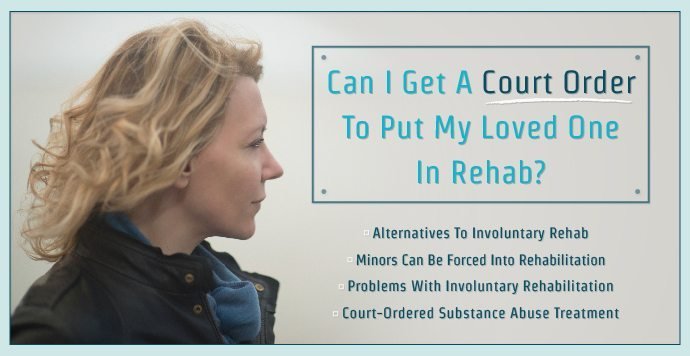Sue likewise reported that her consuming habits had altered and that she had slimmed down. She showed that she would likewise monitor her eating and seek aid if needed. Sues objective in the future was to go back to the treatment program participated in and offer support to other locals in the program.
Take legal action against met her counselor and completed an intake interview. Based on information acquired during this interview, Takes legal action against therapist, a deaf social employee, informed her that her drinking habits made up a moderate risk. Sue was described a psychologist for examination of her anxiety and eating behaviors. The psychologist suggested a trial on antidepressant medication and specific sessions a therapist who specialized in working with individuals who experience eating conditions.
Takes legal action against chemical dependence counselor described that the viewpoint of the program was to motivate her to reduce the damage she caused herself and others through her use of alcohol. Take legal action against was told that abstaining was the perfect goal but that she might reach this objective gradually gradually or that she could perhaps get rid of the dangers included with drinking and eventually be able to consume in moderation.
In counseling sessions, her counselor assisted her in the process of analyzing how her drinking had actually affected her life consisting of ways it had avoided her from pursuing her top priorities in life. Take legal action against and her counselor produced a list of Sues life priorities and brief and long-term objectives. They collaborated to assess just how much, how frequently, and under what situations Sue consumed and what the results of her drinking behavior included.
Unknown Facts About What Is A Treatment Fr An Opiate Addiction
She was likewise supplied with details on coping and problem resolving methods, assertiveness, interaction, emotional identification and policy, relationships, and sources of social assistance in the community - dessertations what is recommended treatment for pregnant women with opioid addiction\. Upon completion of the 30-day outpatient treatment program Sue reported that she had actually effectively stayed abstinent for 1 month. She showed that she had actually gotten significant insight into how her drinking adversely impacted her life and expressed a desire to pursue continuous sobriety.
Her therapist suggested that she participate in AA meetings and continue her sessions with her psychologist. Debra S. Guthmann, Ed (what is used for the treatment of heroin addiction?). D is director of the Department of Student Worker Solutions at the California School for the Deaf in Fremont, CA, and the former director and current project director for a long-lasting training and conference grant at the Minnesota Chemical Reliance Program for Deaf and Hard of Hearing People situated in Minneapolis, Minnesota.
Guthmann has actually released various articles, developed materials and provided outreach and training activities nationally and worldwide relating to various aspects of compound abuse, mental health and other topics connected to work Deaf and hard of hearing individuals. Katherine A. Sandberg, B.S., L.A - how get more info effective is the addiction treatment discovery program.D.C., is program manager of the Minnesota Chemical Reliance Program for Deaf and Hard of Hearing Individuals, situated in Minneapolis, Minnesota.
Sandberg was also associated with Click for more the advancement of a specialized version of the Drug Abuse Resistance Education (D.A.R.E.) Curriculum and has released articles, presented at conferences and workshops, provided material advancement and offered outreach and training activities in the location of compound abuse with Deaf and difficult of hearing individuals nationally.
Little Known Questions About What Does Successful Treatment In Addiction Look Like.
D., has worked at the Kansas School for the Deaf, Minnesota Chemical Dependency Program for Deaf and Hard of Hearing Individuals, Research Medical Center-Deaf Solutions, and is presently used by the Missouri Department of Mental Health and has a Private Practice in the Kansas City Metropolitan location. Dr. Lybarger holds degrees in Indication Language Interpreting, Addiction Researches, and Therapy Psychology.
Lybarger is also a released author and a regular presenter at local, and nationwide conferences in concerns connected to mental health and deafness. Alcoholics Anonymous World Solutions Inc. (1991 ). Twelve actions and twelve customs (45th Ed.). New York City: Alcoholics Anonymous Publishing Beck, A - why a teenager should go to treatment for addiction.T., Wright, F.D., Newman, C.F., & Liese, B.S.

Cognitive treatment of compound abuse. New York City: Guilford Press. Hayes, B., Blacksher, S., Dodd, M., Fox, T., Lewis, K., & Wittman, F.D. (1993 ). The social neighborhood model for the treatment of alcohol and other drug problems. A report by the Social Model Consensus Panel convened by the California Department of Alcohol and Drug Programs, Los Angeles, CA.
( 1994 ). Designs of alcoholism used in treatment: Contrasting AA and other perspectives with which it is typically confused. Journal postheaven.net/voadilu3mp/parity-and-the-medicalization-of-addiction-treatment-what-is-treatment-centers of Studies on Alcohol, 55, 159-166. Reissman, F. (1965 ). The assistant therapy principle. Social Work, 10, 27-32.
The Best Strategy To Use For Which Treatment Did Viewing Addiction Through The Lens Of Physiological Dependence Inspire
Author links open overlay panelZ.BerezaProgram moreThe medical design assumes the expert psychotherapeutic support at all stages of the rehab process and pharmacological treatment of comorbid mental disorders. Assessment of the efficacy of the medical design rehabilitation based on the clinical, psychological, and social characteristics of clients at the all stages of the treatment.
The addition criteria were: age above 18 years, withdrawal status. The clients were taken a look at four times: 1 throughout the very first weeks of treatment; 2 after 45 days; 3 after 6 months; 4 after 12 months. The main evaluation the highest scores kept in mind in the areas: "household and social connections", "health status", "psychiatric status" and "legal elements" got lower scores.
Early retired patients the most high-end performance observed on the scale of "drug alcohol utilizing", "job/livelihood", "health status", "legal elements", the "psychiatric status", "household and social connections" recorded lower ratings. Indicators on the scale of "substance abuse", "alcohol" in this group of clients was substantially higher than patients who remain on treatment, which may indicate a possible updating of the destination to the drugs.
In the course of the rehabilitation process exposed favorable changes in medical, psychological and social characteristics of clients. Recommended articlesCiting articles (0 )Copyright 2017 Published by Elsevier Masson SAS.
How Would A Solution Focused Therapist Approach Treatment For Addiction - An Overview
Date: 01/25/2017 At a time when some 2. 2 million people in the United States are addicted to heroin or prescription pain relievers, and overdoses claim tens of thousands lives every year, feels the seriousness. As director of the, he champs a structured yet caring method to opioid use disorderone that de-stigmatizes medication-assisted treatment.

Office of National Drug Control Policy for its successes. Now Stoller aims to complete the gaps and help cement clients' gains nationwide. Focusing on coordination with neighborhood physicians trained to supply buprenorphine in-office, Stoller wants to increase access to the detailed, tailored help provided by opioid treatment programs (OTPs) like the Broadway Center.
However as The Johns Hopkins Medical facility's ambulatory addiction treatment program, the center focuses more attention on provision of other services, like therapy and housing. Especially, the center needs dependencies counseling and involvement in group classesonly a couple of for steady patients, but more for those battling with ongoing usage. Instilling self-understanding and a confident mindset are crucial to helping clients.
For most other centers using psychosocial support, Stoller notes, literature reports around 25 percent adherence. Still, a major problem surfaces as individuals seek carea basic lack of upkeep therapy. It troubles Stoller that many community doctors accredited to offer buprenorphine pick not to. He thinks there is terrific opportunity for OTPs to encourage buprenorphine recommending by providing doctors assistance and improving the possibility of a favorable experience.
Some Known Facts About What Is The Best Treatment Center For Addiction.
Clients are concurrently enrolled at the center while receiving buprenorphine from their main care or psychiatric physician, encompassing them the reach of a Johns Hopkins-tested benefits approach to recovery.